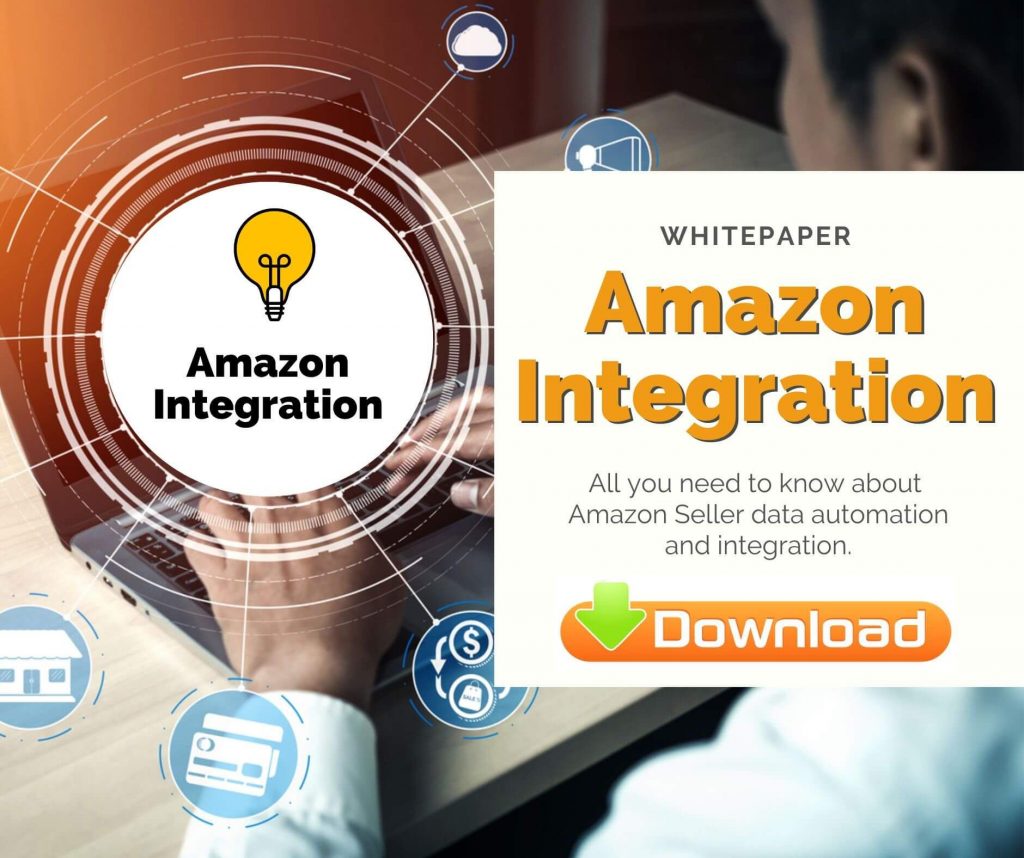Apr 2018

This post was updated to reflect current trends and information
Founded in 1994 in the USA, Amazon.com is the largest online retailer of books, clothing, electronics, music and many other products. Currently, he became one of the leading and largest eCommerce platforms in the world. Amazon keeps pace with technology, by leveraging it to minimize human errors factor and improve efficiency. Amazon was one of the early adopters of process automation and electronic data interchange for his eCommerce platform.
Read: Free Guide – Introduction to EDI
Amazon Vendor Central or Amazon Seller Central?
We have been hearing so much these terms: “Amazon Vendor central” and “Amazon Seller Central”. So, what are these terms? what do they mean? Let’s explore both, one at a time.
Any company that wants to sell its products or services on Amazon’s platform, will be setup on that platform either in the “Amazon Vendor Central” or in “Amazon Seller Central” portal. What is the difference?
Amazon Vendor Central
First, the Vendor Central, is a web-based portal used mainly by manufacturers and distributors. Access to Vendor Central, is by invitation only.
A company selling its products/services directly to Amazon, who in turns sells it to the end consumer, will be setup in the Vendor Central portal of Amazon. In a similar case, Amazon is the buyer of the company’s products. Amazon will sell the products under his own brand name to the end consumer. Usually, when a package is shipped from Amazon to the end consumer, packages are marked as: “Ships from and sold by Amazon.”
Companies setup to use Amazon Vendor Central are considered 1P (or first party seller).
Amazon Seller Central
Again, the Seller Central, is a web-based portal used mainly by the Seller (or store owner on Amazon). Amazon offers his eCommerce platform for companies who want to manage their own stores on his platform and give them the opportunity the Amazon Marketplace. This service is offered against a monthly fee for the usage, and other fees at the transaction level.
In this case, the manufacturer or distribution will be selling his own products directly to consumers on the Amazon marketplace by using Seller Central account.
As a marketplace seller, a subscriber will be able to handle fulfillment and logistics for his “seller account” based on (2) different options:
- “Fulfillment by Merchant (FBM)”: The seller can handle the shipping, customer service, and returns for each individual order himself. Fulfillment by Merchant orders, will be shipped out of the merchant’s warehouse. Seller can also use drop-shipping method, subject to compliance with the Amazon Drop Shipping Policy.
- “Fulfilled by Amazon program. (FBA):The seller will have the option to allow Amazon to handle fulfillment of his orders, through inventory sent to Amazon warehouses. Obviously, seller has to enroll his products on Amazon under the FBA program, and Amazon will have additional fees towards using his fulfillment resources.
Amazon Data Integration
Integration with Amazon, is the process of implementing one or multiple flows to extract relevant data from a company’s own system and send to its Amazon account/store (i.e. product and pricing information, inventory data…). At the same time, extract the information related to sales orders, clients and payment information from Amazon’s account/store and send to a company’s internal software system.
Read: Integration with Amazon Web Services (MWS): Things you should know
Automating Data Integration with Amazon
As described above, the integration with Amazon is very important and crucial for a company successful online commerce. The integration process does not happen once. It is a continuous process of keeping the “synchronization” as close to “real-time” as much as possible.
To be able to keep a persistent ongoing integration between a company’s Amazon account and its internal Software system, companies have no choice other than embracing “automated integration”.
Benefits of integration with Amazon
Here are the top 5 benefits of integration with Amazon, which will be also detailed in another post in the future:
1. Ability to deliver your products quickly to your consumer in a very competitive marketplace
2. Avoid chargebacks, credits and penalties related to poor or no accurate inventory and stock status on your Amazon account
3. Avoid unnecessary none-productive human errors when manipulating manually orders received from your Amazon account
4. Win on visibility and credibility of your Amazon account and products.
5. Comply with Amazon terms of agreements in relation to product delivery.
Options on Amazon for efficient integration?
Depending on the type of account your company is setup, Amazon offers (2) methods of integration:
- EDI (X12) integration (in North America) for Vendor Central account customers
- Amazon Marketplace Web Service (Amazon MWS) for Seller Central account customers.
Messages to exchange with Amazon
Whether using EDI X12 or Amazon MWS to exchange messages, he following documents are the mandatory ones for a successful integration:
Amazon works with various providers and types of EDI software:
EDI X12 documents
- EDI 846 – Inventory Status
- EDI810 – Invoice
- EDI 850 – Purchase Order message (Customer triggered)
- EDI 855 – Purchase Order Acknowledgment
- EDI 856 – ASN (Advance Ship Notice)
- EDI 860 – Order Change Notification
Amazon MWS messages
- Products
- Orders
- Order Acknowledgment
- Order Payment
Why integration with Amazon is crucial
As one of the largest online retailers in the world, Amazon is a powerhouse when it comes to e-commerce. Integrating your business with Amazon can provide you with unparalleled access to a massive customer base, improved visibility, and increased sales. By utilizing Amazon’s platform, you can tap into their extensive resources and take advantage of their advanced tools for product listings, inventory management, and shipping.
In addition, Amazon’s sophisticated algorithms can help you to target specific customer segments and increase your visibility within your niche market. With Amazon’s robust analytics and reporting tools, you can track your performance and identify areas where you can improve your sales strategy.
Moreover, integrating your business with Amazon can also enhance your brand credibility and customer trust. By aligning your brand with Amazon’s reputation for quality and reliability, you can build a strong customer base that is willing to invest in your products and services.
– The average number of monthly visits to Amazon, according to Similarweb is 2.6 billion.
– Amazon has over 2.5 million active sellers on its platform, with more than half of its sales coming from third-party sellers.
– Amazon’s global logistics network includes over 400 fulfillment centers and 75 sorting centers.
In 2022, Amazon achieved a net sales revenue of almost 514 billion U.S. dollars globally, with its headquarters located in the United States.
Amazon Integration for your business
Don’t miss the great opportunity for your business to trade on Amazon. We provide Integration and Automation for Amazon Seller Central Users as well EDI Integration for Vendor Central Users. Contact us today to get more information, request a quote or schedule a demo.











